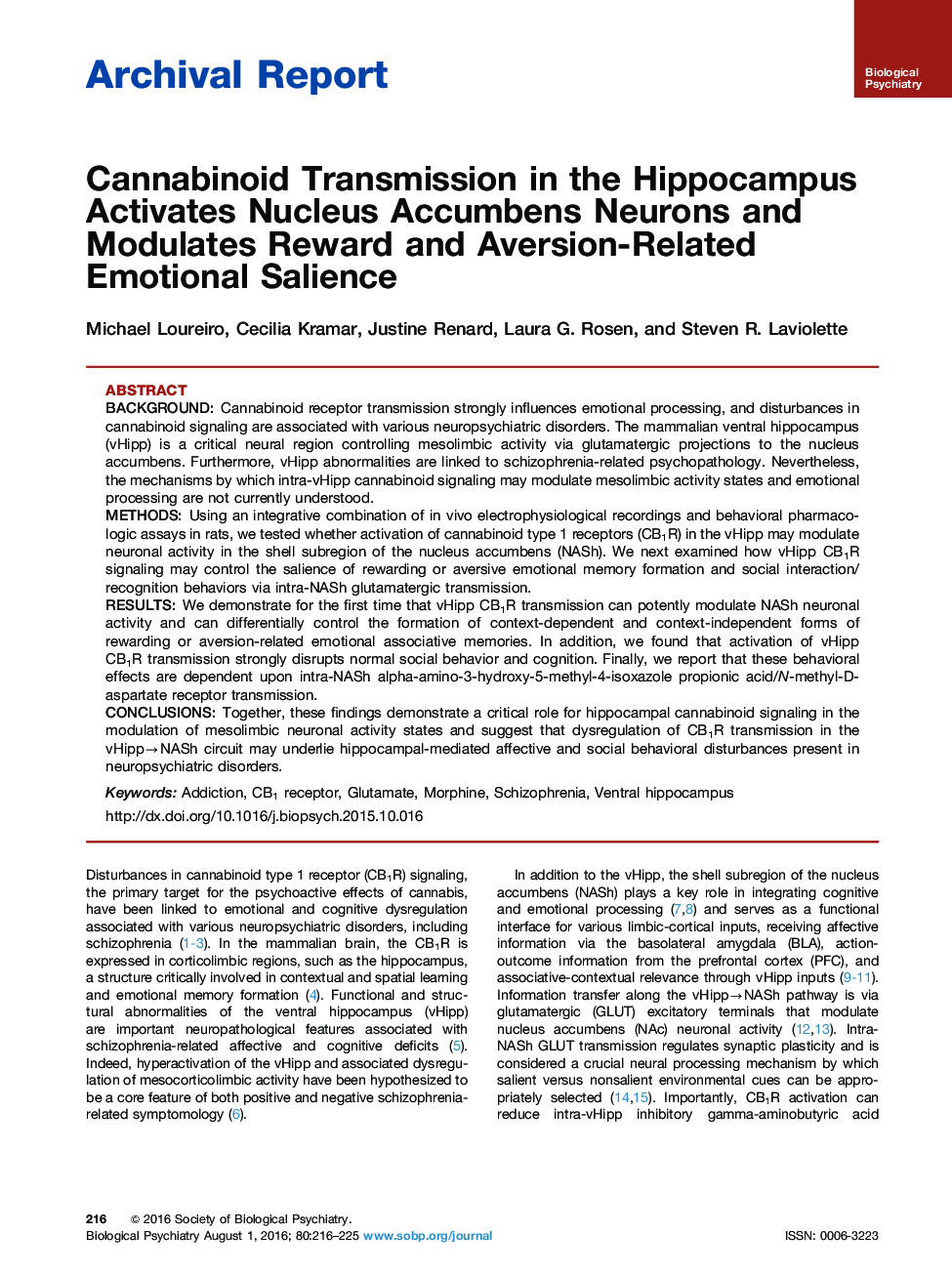| Article ID | Journal | Published Year | Pages | File Type |
|---|---|---|---|---|
| 6226503 | Biological Psychiatry | 2016 | 10 Pages |
BackgroundCannabinoid receptor transmission strongly influences emotional processing, and disturbances in cannabinoid signaling are associated with various neuropsychiatric disorders. The mammalian ventral hippocampus (vHipp) is a critical neural region controlling mesolimbic activity via glutamatergic projections to the nucleus accumbens. Furthermore, vHipp abnormalities are linked to schizophrenia-related psychopathology. Nevertheless, the mechanisms by which intra-vHipp cannabinoid signaling may modulate mesolimbic activity states and emotional processing are not currently understood.MethodsUsing an integrative combination of in vivo electrophysiological recordings and behavioral pharmacologic assays in rats, we tested whether activation of cannabinoid type 1 receptors (CB1R) in the vHipp may modulate neuronal activity in the shell subregion of the nucleus accumbens (NASh). We next examined how vHipp CB1R signaling may control the salience of rewarding or aversive emotional memory formation and social interaction/recognition behaviors via intra-NASh glutamatergic transmission.ResultsWe demonstrate for the first time that vHipp CB1R transmission can potently modulate NASh neuronal activity and can differentially control the formation of context-dependent and context-independent forms of rewarding or aversion-related emotional associative memories. In addition, we found that activation of vHipp CB1R transmission strongly disrupts normal social behavior and cognition. Finally, we report that these behavioral effects are dependent upon intra-NASh alpha-amino-3-hydroxy-5-methyl-4-isoxazole propionic acid/N-methyl-D-aspartate receptor transmission.ConclusionsTogether, these findings demonstrate a critical role for hippocampal cannabinoid signaling in the modulation of mesolimbic neuronal activity states and suggest that dysregulation of CB1R transmission in the vHippâNASh circuit may underlie hippocampal-mediated affective and social behavioral disturbances present in neuropsychiatric disorders.
